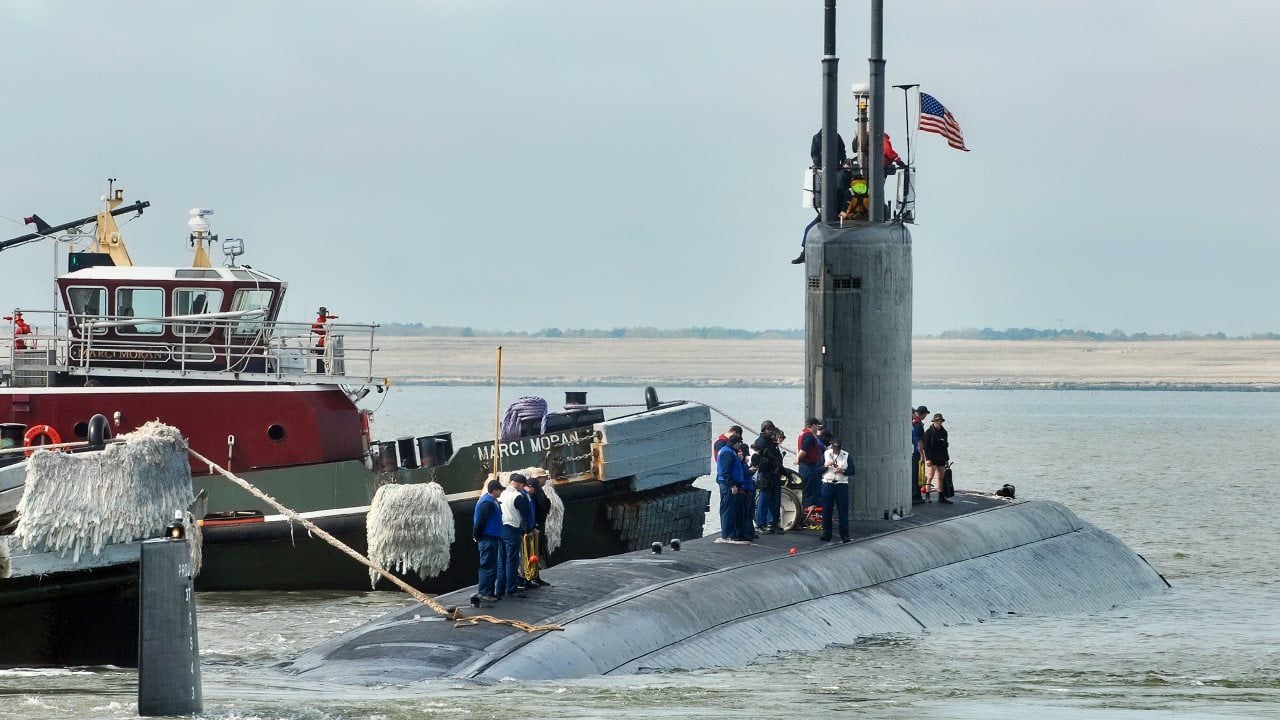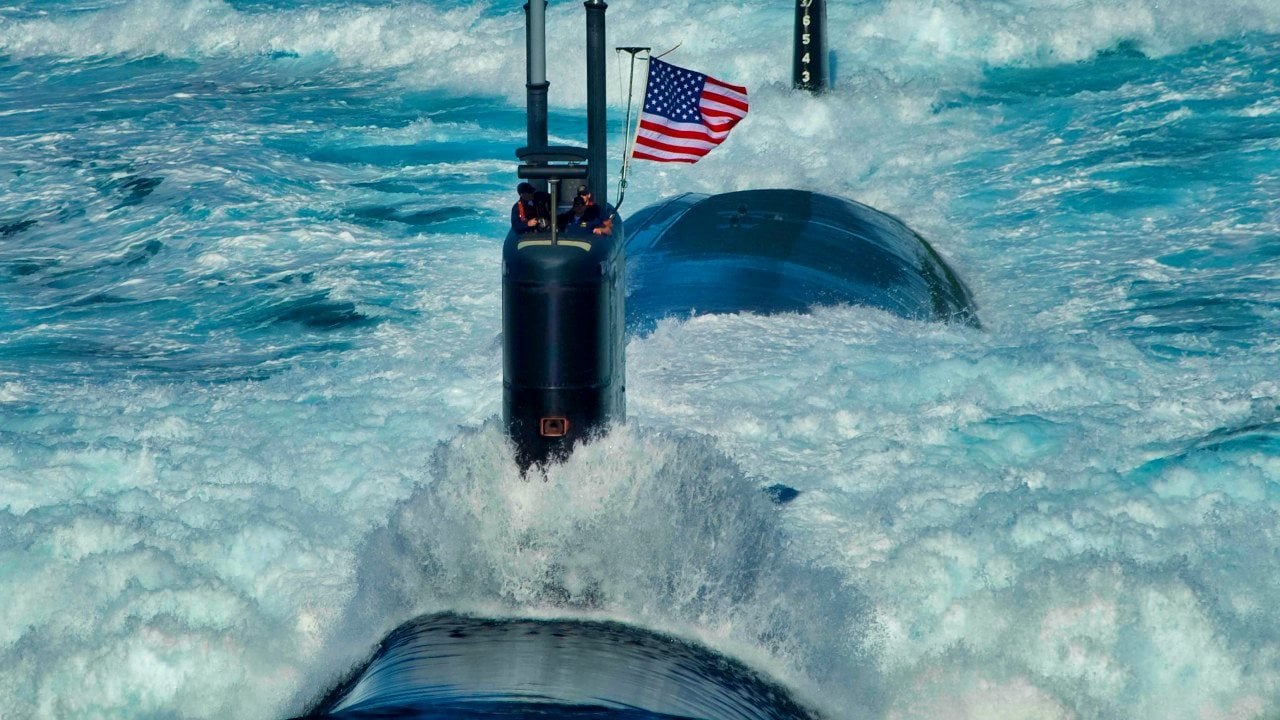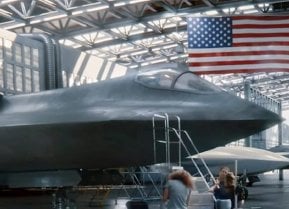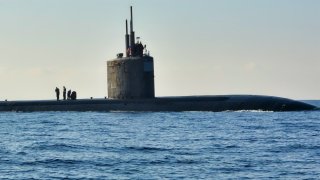The Navy's Los Angeles-Class Nuclear Attack Submarine Dilemma
The Los Angeles-class (688 class) attack submarines, first commissioned in 1976, are considered among the world's greatest nuclear-powered attack subs due to their advanced capabilities and ubiquity. Equipped with torpedo tubes, Tomahawk cruise missiles, sophisticated sonar, and electronic warfare systems, they offer strategic advantages over more costly and vulnerable aircraft carriers.
What You Need to Know: The Los Angeles-class (688 class) attack submarines, first commissioned in 1976, are considered among the world's greatest nuclear-powered attack subs due to their advanced capabilities and ubiquity. Equipped with torpedo tubes, Tomahawk cruise missiles, sophisticated sonar, and electronic warfare systems, they offer strategic advantages over more costly and vulnerable aircraft carriers.

-Despite their value and the rising threats from adversaries like China, the U.S. Navy is retiring these submarines without sufficient replacements, largely due to budget constraints and bureaucratic hurdles.
-This move risks creating gaps in America's undersea fleet, potentially shifting the balance of power in favor of rivals. The article argues for modernizing existing subs or transferring them to allies to maintain strategic advantages.
Why Retiring the Los Angeles-Class Submarines Could Be a Big Mistake
Known as the 688 class (pronounced “six-eighty-eight”), America’s Los Angeles-class attack submarine is likely the greatest nuclear-powered attack submarine in the world. If it is not the greatest, it is certainly the most ubiquitous.
Built by Newport News Shipbuilding and Dry Dock Company in Newport News, Virginia, the first sub in this class, the USS Los Angeles (SSN-688), was commissioned way back in 1976. These subs replaced America’s previous premier attack submarine, the Sturgeon-class.
The Specs
The standard Los Angeles-class submarine is equipped with four torpedo tubes and can carry up to twenty-five torpedoes. These boats can launch the always-potent Tomahawk cruise missiles. Los Angeles-class subs are equipped with advanced sonar systems, making them highly capable of detecting and tracking enemy vessels.
What’s more, they’ve got a beautiful suite of electronic warfare (EW) systems to defend against enemy attacks.
Powered by a single nuclear reactor, which provides them with a high degree of stealth and endurance, this incredible war machine has a displacement of approximately 6,900 tons when submerged and can cruise at more than 28 miles per hour (that’s fast for a sub). The Los Angeles class carries 143 crew onboard, including sixteen officers and 127 enlisted personnel. A 688-class sub can dive down to over 900 feet.
Thanks to her nuclear reactor, the Los Angeles-class submarine has a seemingly limitless range and poses a grave threat to the rival navies of China, Russia, and others.
Submarines vs. Aircraft Carriers
A Los Angeles-class attack submarine costs around $1 billion to build and about $50 million per year to maintain. That’s a steal, especially when considering that the average cost of an American aircraft carrier—the primary seaborne power projection platform—is in the tens of billions to build and the hundreds of millions of tax dollars to maintain.
What’s more, submarines, like the Los Angeles-class attack submarine, require just a fraction of the crew to operate that an American flattop needs (even with the advanced automation practices of the kind that the Gerald R. Ford-class carriers are implementing).
Further, the rise of anti-access/area-denial (A2/AD) capabilities (and their proliferation to virtually every major American challenger, including rising powers like China, tinpot dictatorships like Venezuela, and even non-state groups like the Houthis and Hezbollah), makes an American flattop an unworthy investment. This reality is even starker when compared to the cost efficiency and power projection capabilities that an attack submarine allows.

While no platform in today’s modern age of massive, global surveillance is undetectable, nuclear subs are among the hardest platforms to track and kill in the world—far more so than aircraft carriers. And subs still provide immense power projection capabilities for the U.S. Navy in today’s A2/AD-laden environments.
Not Enough Replacements on Hand
Despite these facts, the Navy continues retiring its fleet of Los Angeles-class attack boats, even as their replacements are not necessarily available. There has been much talk about what to do with many of the retiring Los Angeles-class subs.
The first thing would be to invest in modernizing them, extending their lifespans, and keeping them in the American fleet. Beyond that, the Navy could sell some of these older units to U.S. allies, such as Australia, to help increase interoperability among our navies and to strengthen the navies of allied militaries similarly faced with China’s rising threat.
As of 2024, there are forty-one Los Angeles-class attack subs in service with the United States Navy. These legendary boats are expected to remain in service until at least 2030, when they will be replaced by the Navy’s new Virginia-class submarines.
However, thanks to budgetary constraints, bureaucratic inertia, lack of political will, and technological complications, the likelihood of the Navy replacing all of its Los Angeles-class attack submarines with the Virginia-class subs is low.
This will create massive gaps in America’s submarine force, which will have deleterious impacts on America’s overall strategic position globally. China, America’s greatest rival in the world today, has mass production capabilities that would make any American industrialist blush (indeed, many of those industrialists spent the last forty years building up China’s capabilities in this regard while tearing America’s down).
Getting Things Right
In a straight-up numbers game, the balance of undersea power will shift immeasurably in China’s favor, if these negative trends persist. America makes some really boneheaded choices. One of them has been to prematurely retire its perfectly fine Los Angeles-class attack subs without reliable numbers of replacement boats on hand.
Another has been to refuse to resell the retiring systems to allied navies. While technological advancements certainly play a factor in determining winners and losers in combat, quantity, as Mao once remarked, has a quality of its own.
China understands this. The Americans, on the other hand, are busy building their wünderwaffe.
Author Experience and Expertise: Brandon J. Weichert
Brandon J. Weichert, a National Interest national security analyst, is a former Congressional staffer and geopolitical analyst who is a contributor at The Washington Times, the Asia Times, and The-Pipeline. He is the author of Winning Space: How America Remains a Superpower, Biohacked: China’s Race to Control Life, and The Shadow War: Iran’s Quest for Supremacy. His next book, A Disaster of Our Own Making: How the West Lost Ukraine, is due October 22 from Encounter Books. Weichert can be followed via Twitter @WeTheBrandon.
All images are Creative Commons or Shutterstock.
From the Vault
Russia Freaked Out: Why the U.S. Navy 'Unretired' the Iowa-Class Battleships
Battleship vs. Battlecruiser: Iowa-Class vs. Russia's Kirov-Class (Who Wins?)


